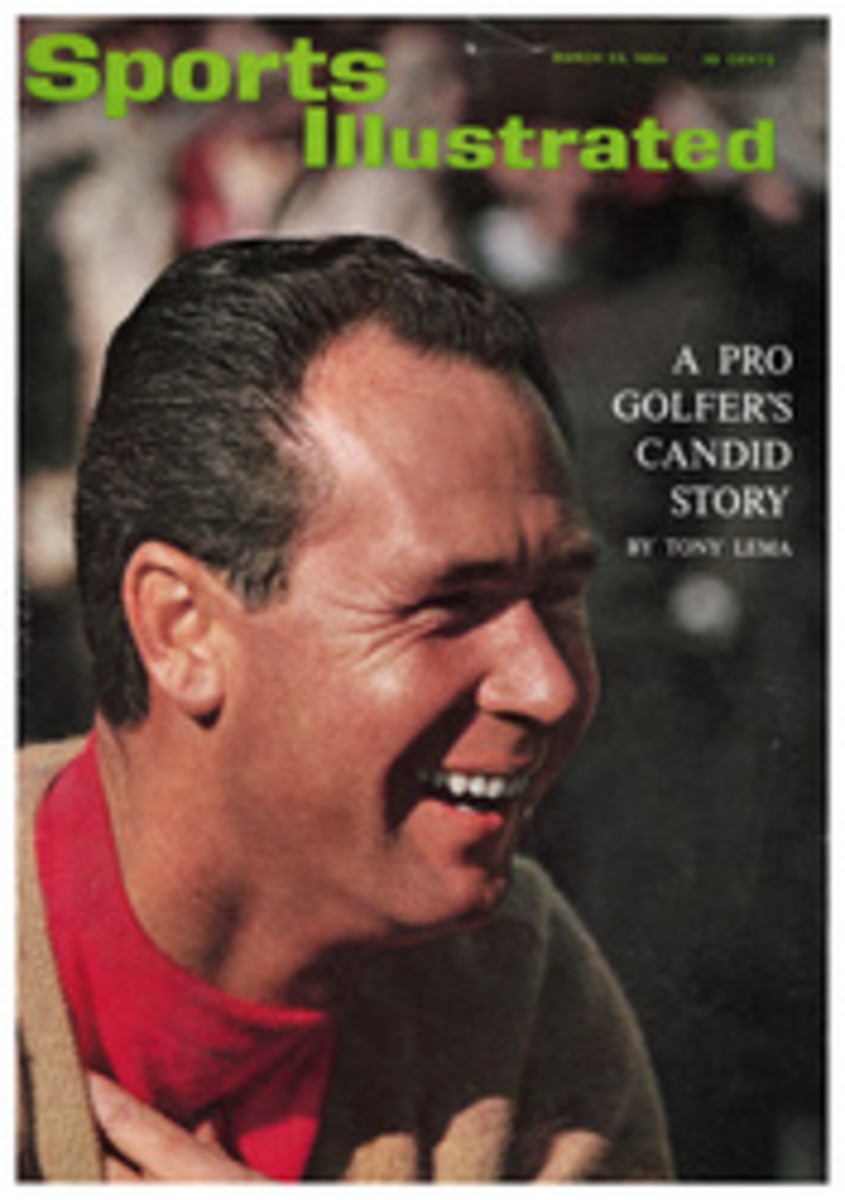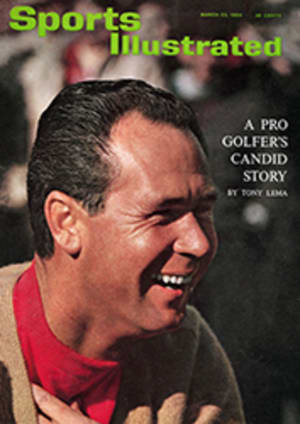
They All Applauded as Oxford Slowly Sank
The annual university crew race on the Thames between Oxford and Cambridge was started in 1829 by a nephew of Poet William Wordsworth and a chap named Charles Merivale, and time and tradition have encrusted it with a reverence usually reserved for Horse Guards and beefeaters. In a tight little island country where the reputations of Oxford and Cambridge permeate life from top to bottom of the land, the race never does anything to spoil the image of always being "well rowed." Well, rarely.
Oxford and Cambridge oarsmen, awarded a coveted blue for rowing against "the other place," feed off the vivid experience for the rest of their lives. White-haired old oarsmen, bowed with age and red-faced with living, attend the contest every year. It is an occasion tinged deep with emotion, and a crew would have to do something supernatural or foolish to be remembered well. Or at least something funny—like sinking.
Both Oxford and Cambridge have sunk more than once in the boat race's long history, on one occasion both in the same race. The very nature of the course, with its snaky meanders and intricate currents, makes it a watery nightmare for coxes faced for once with something more than keeping the bow straight and encouraging the crew. In certain conditions of wind the Thames can become disastrously cantankerous. Luck, however, has generally held, and only once since 1925 has a boat, with its crew of nine, sunk. That was in 1951, when national pride was swelling and the country was flexing its muscles. The submerging was made the more memorable because Oxford suffered the ignominy of going under watched not only by the press and spectators but by a television audience of several million. To their eternal credit, the Oxonian oarsmen kept their stiff upper lips to the end, and every Englishman who witnessed the occasion will go to his grave with a picture imprinted on his mind of them up to their armpits in water. In all his movies Buster Keaton never did it better.
Although people always remember crews as crews and not as individuals, and not a single person was to blame for the debacle, the Oxford crew was notable that year not so much for its upright marionette style as for its coxswain. He was George Alexander Carver, the first American to fill the position in the Oxford boat. He looked like a bespectacled Mickey Rooney, and he had an enormous reputation. Just as some men can estimate horseflesh at a mere glance, Carver could, it was boasted, read currents. "I try to feel the tides," he said. A breeze building up a mile away could not escape his sensitive smell. Carver also employed a megaphone, distinctly unusual in England, and called his crew "gang," which, according to one Oxford oarsman, made them feel "like a bunch of pirates rowing in for the kill." That is how they did look compared to the Cambridge crew. Faster, smoother and better coordinated, displaying a long, elegant layback at the end of each stroke, Cambridge started as the favorite. Typically, those English whose loyalties were not quite firmly rooted switched their support to underdog Oxford.
Boat Race Day (March 24) dawned with a heavy wind, rain and snow plus patches of sun. An estimated half a million—flecked with light-blue and dark-blue rosettes—thronged the banks, agog for a mere glimpse of the crews flashing by and heedless of the atrocious weather. Cockneys and old Etonians, politicians, authors and artists at riverside parties, men, women and children from all streams of life flowed together with one solitary interest.
"Anything could happen today," somebody prophetically warned Carver. "Don't worry," replied Carver exuberantly, "we'll take it easy." He donned his windbreaker, adjusted his megaphone and commanded his crew, "Fasten your safety belts, brother. It's going to be a bumpy ride." At the stake boats the crews had some difficulty getting straight, and water slopped over the sides of their shells. "I knew before we began." said Carver later, "we were going to sink."
The crews started in a shower of spray, but it was Oxford that seemed inundated with the worse conditions, diving through water that was behaving as if it were inside a pot on the boil. It broke over the bow and forward riggers, and within a minute the Oxford shell seemed to have the river running through it. Cambridge, meanwhile, shot like a pike after its prey from a lightning start to an impressive lead.
Over the radio a BBC commentator bubbled, "I doubt if Oxford is going to last. They're shipping so much water it will surprise me if they are able to keep going at this rate much longer. I'm afraid they're sinking into the Thames. They have ceased to row. We are shipping a tremendous amount of water ourselves. In fact, we are getting quite drenched. This is the wettest race I've ever known."
The Oxford shell had, indeed, sunk slowly into the Thames. The race had lasted 2 minutes 57 seconds for Oxford and the shell had gone barely half a mile, the shortest, quickest ending ever. The crew sat like guardsmen on parade, upright until it was absolutely impossible to row any more. "No word was said," declared the Oxford boat club president, Chris Davidge. "There was just silence. We left our boat floating dismally upside down." Coxswain Carver admitted later that he was the first to abandon ship, and one after another the rest sheepishly followed him through icy water to the safety of a launch. As they arrived back at the boathouse mounted police struggled to hold the crowds from the bedraggled crew. "Good old Oxford," they cried. "Have another go."
Second chance
Like a fish flung back in the pool, Oxford was allowed another go because the boat race, a private match, is not bound by strict rules but rather by loose understandings. Cambridge could have perhaps continued to the end and won unchallenged. But in 1927 the two universities had reached a gentleman's agreement that said if either crew suffered an accident not due to any individual oarsman, before going a mile, the umpire could recall the crews. Although the resulting decision was considered controversial, the event was on this basis declared "no race" and rescheduled for two days later. The umpire was the Bishop of Willesden, and nobody wanted to get enmeshed in the robes of ecclesiastical authority.
When the two met again, this time in a slight drizzle, Cambridge thrashed Oxford by 12 lengths, the biggest margin of victory in half a century. The winning crew was one of the most magnificent ever to take the water. It went on to beat Yale, Harvard, Boston University and MIT in America, sweep the Grand Challenge Cup at Henley and the eight-oars for Britain in the European championships. For a time it was the sight of this shell that dominated British memories, but recollection of these victories has gradually dimmed. Now outside the intimate world of rowing it is Oxford sinking, sublimely disciplined to the last, that people best recall. "The finest sporting sight I've ever seen," said one sporting Briton.
PHOTO
COXSWAIN CARVER LED CREW TO SAFETY

